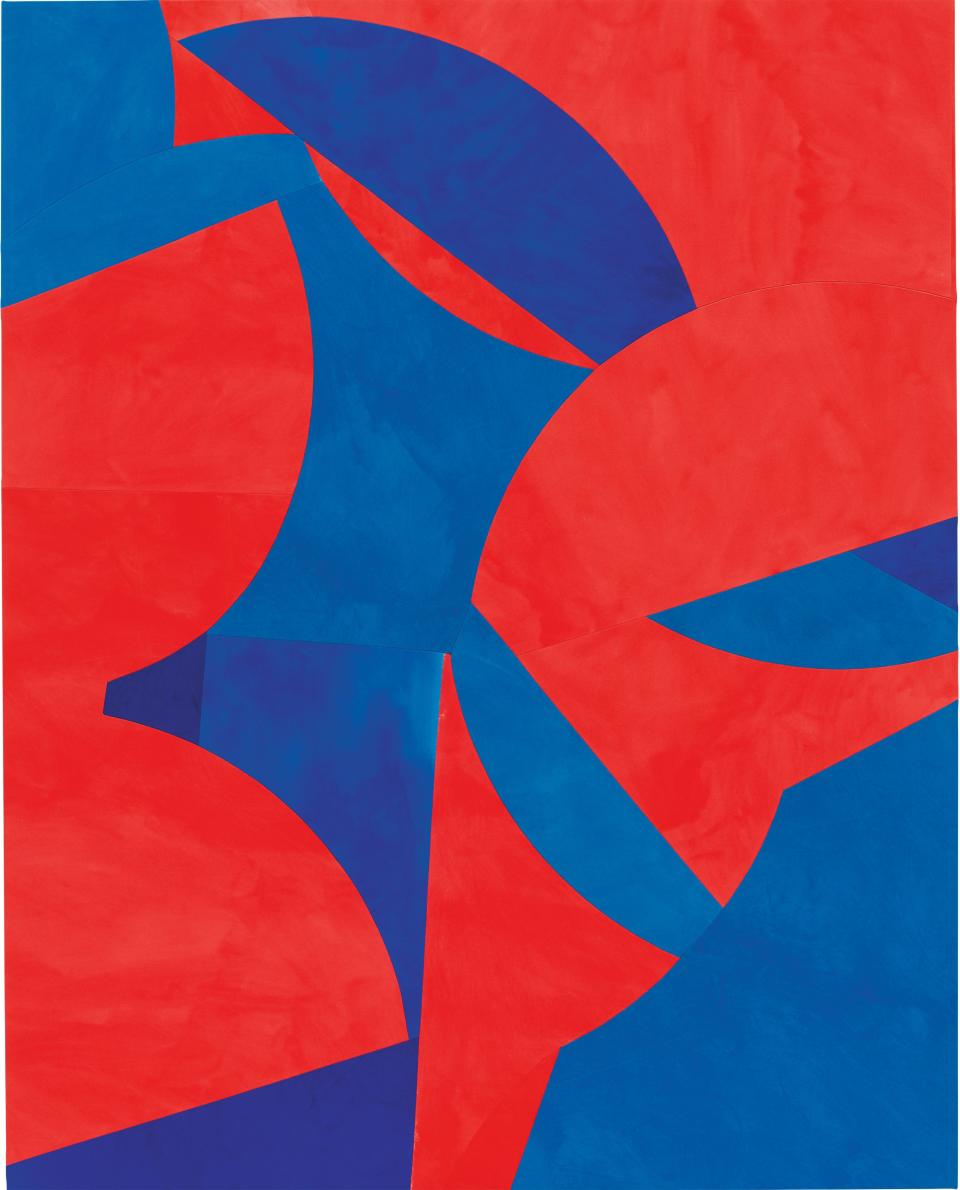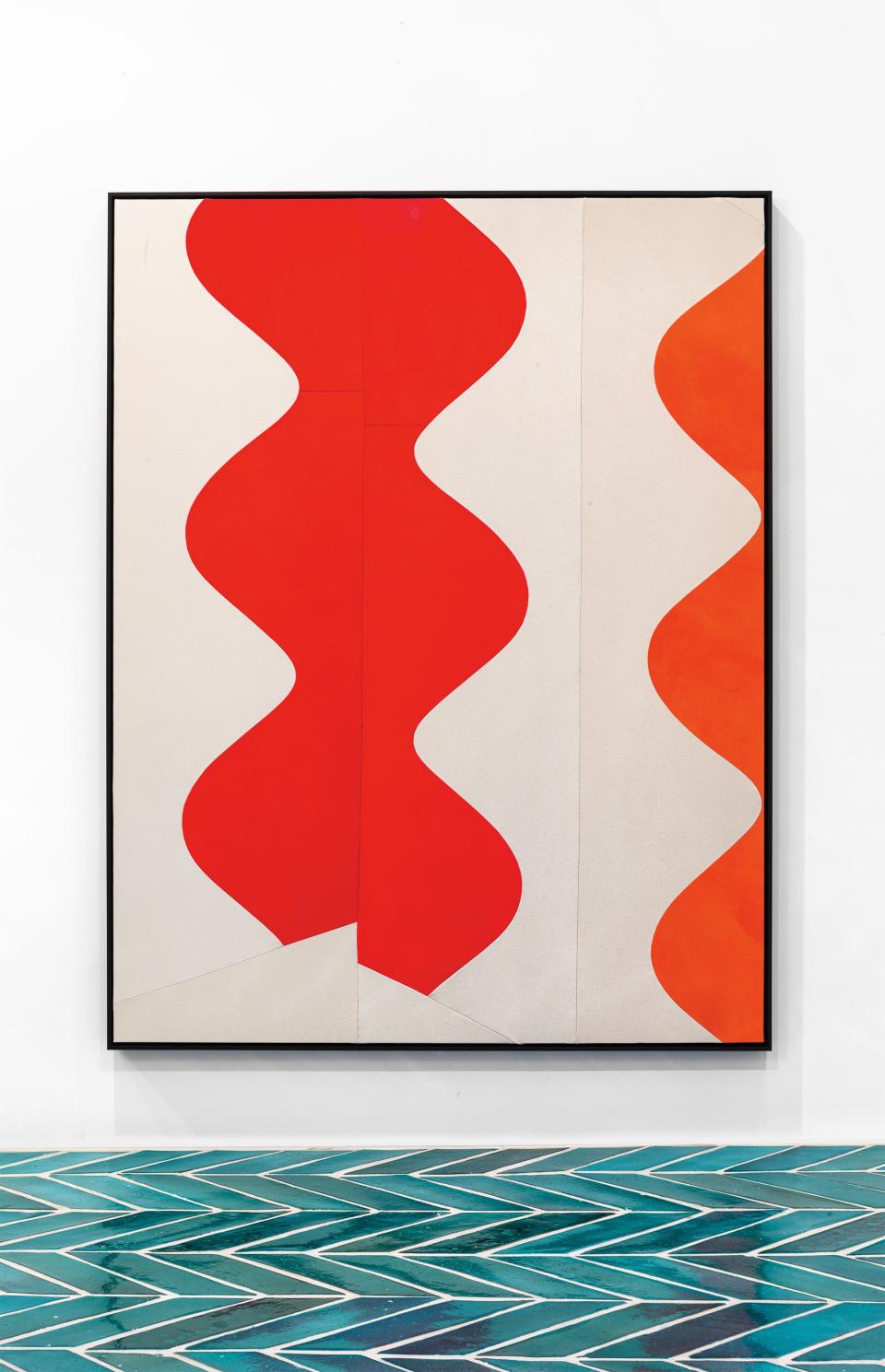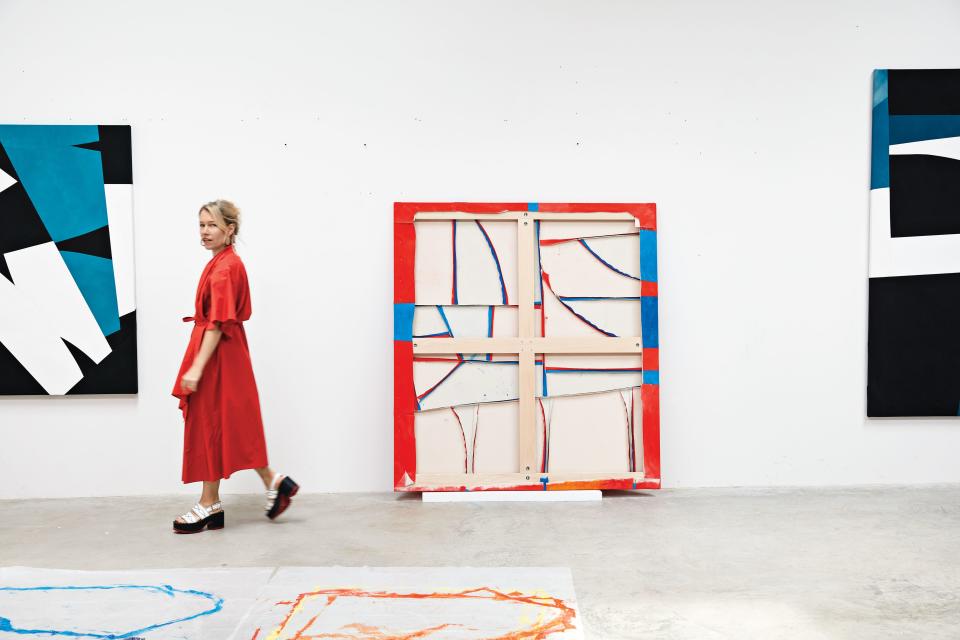Brooklyn’s Sarah Crowner Is Reinvigorating American Painting
All I ever wanted to do was make a painting that you could immerse yourself in,” Sarah Crowner tells me. We’re in her studio, in the Red Hook section of Brooklyn. It’s early October, and the space is full of designs and props for Garden Blue, Jessica Lang’s new ballet for the American Ballet Theatre, which opens in a couple of weeks with set and costumes by Crowner. She’s just back from Pittsburgh, where two new works of hers—a 23-by-18-foot canvas and a 64-foot-long wall of handmade tiles—are appearing in the Carnegie International. In a few weeks, she’s off to Veracruz, Mexico, to christen the swimming pool she’s designed for an artists’ residency there. The pool, “two wave shapes put together but skewed,” as she says, was her response to a request for a sculpture in the landscape. “I thought, What do artists want to do after they work?” It’s a striking, mostly blue tile basin, the deck paved with pinkish, unglazed Mexican terra-cotta—hard to imagine a more immersive work of art.

Crowner staked her claim as a fresh voice in contemporary painting at the Whitney Biennial in 2010. Her large abstractions, made of boldly colored canvas shapes that she pieces together on her industrial Juki sewing machine, have an impromptu handmade look that pulls the viewer into them. They make you think of Ellsworth Kelly or Matisse’s cutouts or Marimekko fabrics, but they’re more unpredictable and not as well behaved. For a show at Casey Kaplan last spring, Crowner altered the floors with half-foot platforms. “Neither your feet nor your eyes can take anything for granted,” wrote The New York Times’s Roberta Smith. The show was, Smith wrote, “a breakthrough.”
Born in Philadelphia in 1974, Crowner grew up in Los Angeles. Her father was a producer for the daytime talk program The Mike Douglas Show, and the family followed when the show expanded to the West Coast. An independent and adventurous child, Crowner went to the University of California, Santa Cruz, and moved to France to attend Parsons Paris for her junior year. Drawing sculptures at the Rodin Museum or copying a Chardin still life, learning in depth about the craft of painting, confirmed her desire to be an artist. “The daily practice of looking and seeing,” she says, “not just discussing or thinking, that was really great.”

The next few years in Crowner’s life were, let’s say, eventful: travel; living in a farmhouse in rural Pennsylvania; Paris again; a one-year residency in Lisbon, where she met Stephane Rebillard, a French hairdresser who is now her husband, with his own salon (Coiffeur) on Nassau Street in downtown Manhattan. They have a nine-year-old daughter, Romy, named after the film star Romy Schneider. Sarah and Stephane moved from Lisbon to New York in 1999. She got her MFA at Hunter, then worked as studio manager for Claes Oldenburg and Coosje van Bruggen. Dissatisfied with her own painting by this time, she turned to ceramics, which made her think about painting in a new way—as a craft, like clay, something to build physically with your hands. Sarah’s mother, a serious quilt-maker, had taught her to sew when she was eight. Oldenburg’s early soft sculptures had all been made by sewing. So why not build a painting with needle and thread? No reason at all.


